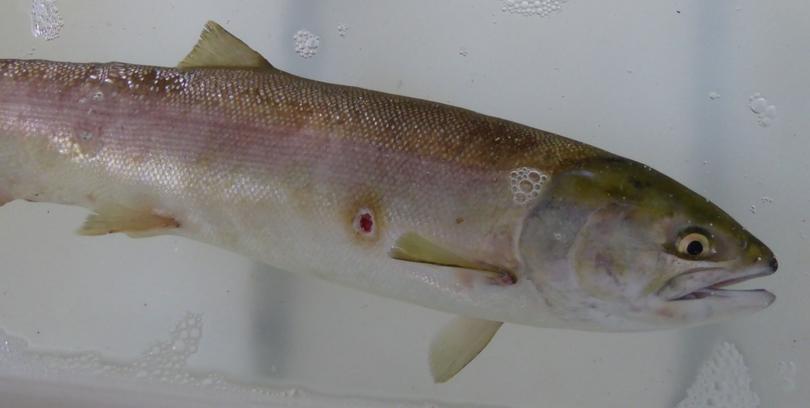forum
library
tutorial
contact

Washington State Board Plans to Enforce
Temperature Limits on Snake and Columbia Rivers
by Lynda V. Mapes
Seattle Times, June 30, 2021
|
the film forum library tutorial contact |

|
Washington State Board Plans to Enforce
by Lynda V. Mapes
|
 As a summer like no other pushes water temperatures to dangerous levels for salmon to the Columbia and Snake Rivers, a state board announced Monday it will uphold the Washington State Department of Ecology's authority to compel action at dams and reservoirs to restrict hot water pollution.
As a summer like no other pushes water temperatures to dangerous levels for salmon to the Columbia and Snake Rivers, a state board announced Monday it will uphold the Washington State Department of Ecology's authority to compel action at dams and reservoirs to restrict hot water pollution.
Ecology in May 2020 exercised its authority under the Clean Water Act to regulate temperature in the river according to standards set by the federal Environmental Protection Agency.
The temperature issue is stoking long-simmering controversy in the region over dam removal on the lower Snake River. Using a mathematical model to assess temperature impacts under varying conditions, the EPA in estimated a free-flowing lower Snake River would be within state temperature limits, even in August.
The Columbia and Snake are essential sources of chinook salmon for southern resident orcas, providing food at a hungry time of year before the orcas make their way to their summer feeding grounds in the Salish Sea, the transboundary waters between the U.S. and Canada, and Puget Sound.
Temperature moderation is crucial for salmon survival. Cold water animals, they are more susceptible to disease and will stop migrating and even perish if water temperatures persist above 68 degrees.
Columbia Riverkeeper and other conservation and fishing groups initiated litigation that ultimately led to publication of the EPA analysis, and opened the door for the state Department of Ecology to take a new regulatory role for the state at eight federal dams, four on the lower Columbia and four on the lower Snake.
"The current heat wave is proof that we must take hot water in the Snake and Columbia rivers seriously," said Brett VandenHeuvel, executive director of Columbia Riverkeeper in a prepared statement.
In an email to litigants, the state Pollution Control Hearings Board said its forthcoming order will require the U.S. Army Corps to operate dams and reservoirs to comply with the new standards.
Ecology already regulates water-quality standards at nonfederal dams all over the state.
The combined effects of climate change and change in the flow of the river caused by dams today regularly push temperatures above safe levels in reservoirs in the Columbia and Snake in some areas for weeks at a time.
The issue is particularly acute this summer because of unprecedented high air temperatures combined with low flows in the Snake River.
Fish managers on poised to rescue sockeye migrating in the Lower Snake, putting them in trucks to take them the rest of the way on their inland migration, to a hatchery for spawning.
Related Pages:
Report: Washington Salmon are in Hot Water by Aaron Kunkler,
Snoqualmie Valley Record, 2/1/21
Research: Sockeye are in Hot Water by Eric Barker, Lewiston Tribune, 10/2/20
Salmon Struggle to Beat Heat in Columbia River Basin by Eric Tegethoff, Washington News Service, 9/10/20
Scientists Assert Only Breaching Can Cool Northwest Waterways by Eric Barker
Post Register, 10/23/19
Riverkeeper: No Sustained Hot Water Temps if Lower Snake Dams Go by Laura Berg, NW Fishletter, 9/5/17
Rising River Temperatures Put Endangered Salmon in Hot Water by Kevin Taylor, Aljazeera America, 8/25/15
learn more on topics covered in the film
see the video
read the script
learn the songs
discussion forum
